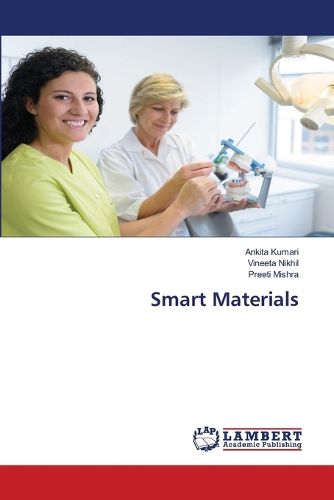Readings Newsletter
Become a Readings Member to make your shopping experience even easier.
Sign in or sign up for free!
You’re not far away from qualifying for FREE standard shipping within Australia
You’ve qualified for FREE standard shipping within Australia
The cart is loading…






Dental materials, used to restore tooth form, function, and integrity, include preventive, restorative, and auxiliary materials. Preventive materials protect against caries, such as fluoride varnishes, while restorative materials repair or replace damaged teeth, like composites and ceramics. Auxiliary materials aid in the fabrication of dental devices but do not become part of the final product, such as impression materials. Historically, dental restorations involved materials like cork, ivory, and metal foils. Over time, materials evolved, moving from gold and silver amalgam to tooth-colored options like composites and ceramics. Despite their development, traditional materials had limitations, such as poor mechanical properties and low biological compatibility. The introduction of smart materials in the 1980s revolutionized dentistry. These materials respond to environmental stimuli like stress, temperature, or pH, making them highly adaptable. Smart materials can be bioinert, bioactive, or bio responsive, with the latter reacting to changes in the environment. Examples include pH-sensitive composites, shape-memory alloys, thermochromic materials, and piezoelectric materials.
$9.00 standard shipping within Australia
FREE standard shipping within Australia for orders over $100.00
Express & International shipping calculated at checkout
Dental materials, used to restore tooth form, function, and integrity, include preventive, restorative, and auxiliary materials. Preventive materials protect against caries, such as fluoride varnishes, while restorative materials repair or replace damaged teeth, like composites and ceramics. Auxiliary materials aid in the fabrication of dental devices but do not become part of the final product, such as impression materials. Historically, dental restorations involved materials like cork, ivory, and metal foils. Over time, materials evolved, moving from gold and silver amalgam to tooth-colored options like composites and ceramics. Despite their development, traditional materials had limitations, such as poor mechanical properties and low biological compatibility. The introduction of smart materials in the 1980s revolutionized dentistry. These materials respond to environmental stimuli like stress, temperature, or pH, making them highly adaptable. Smart materials can be bioinert, bioactive, or bio responsive, with the latter reacting to changes in the environment. Examples include pH-sensitive composites, shape-memory alloys, thermochromic materials, and piezoelectric materials.